In the second topic covered by our #AscertiaOn video series, Ascertia’s Mike Hathaway and Sam Crook discuss the importance of standards in enabling cross-border business.
Together, the pair look at perceived barriers as a result of legislation, as well as how eSignatures continue to develop. They also assess the impact of regulation, in different industries and across different countries, and the importance of longevity when it comes to electronic signing.
For those interested in the first topic we covered, digital transformation our summary is here.
The importance of standards when conducting cross-border business
Standards allow information to be exchanged regardless of jurisdictions or borders, and as technology has matured this has improved interoperability.
This is particularly so in Europe, where remote signing standards are so highly regarded, particularly for cross-border business, that they have reached a level that other geographies aspire to.
What are the barriers to cross-border business?
One example of cross-border business barriers is a lack of legislation by which a registration authority can be measured and no clear guidance on what can or cannot be done.
Without a consistent bar for measurement, it can be difficult to maintain digital signing standards as they are meant to be. It is why some countries misinterpret what the standard is meant to deliver.
There are also technological barriers. Many remote authorised signing solutions rely on smartphone access to the internet. Where that’s not possible, people revert to text messages and OTPs, which are inherently insecure.
On one side are standards and on the other is technology evolution - both create barriers when it comes to using digital signing for cross-border business.
Sam argues that eIDAS has torn down barriers and improved cross-border interoperability, ensuring that business can be done easily and effectively.
A standards-first approach provides customers with the best flexibility, the best choice and the ability to transact cross-border easily and safely.
Sam then goes onto identify two other barriers.
The first are countries that take the eIDAS regulation and apply even more stringent rules around it. The additional rules defeat the point of having centralised regulation.
Second, video vetting. Uncertainty remains about whether Trust Service Providers (TSPs) can issue qualified certificates, despite full acceptance that technology can be used for this purpose.
Cross-border business and IT management
When it comes to technology, the pair agree that choosing a solution that incorporates a standards-based Cloud Signature Consortium API is essential.
While Ascertia delivers choice at the front-end for users, it also works with TSPs utilising the company’s tech at the back-end, ensuring a circle of compliance and interoperability across borders.
Importance of document longevity
Mike points out that while document standards are the pressing question, people also want longevity and legal certainty, so they require solutions that are compliant with PDF/A for archiving and long-term preservation.
Sam closes off the discussion with the point that additional regulations, such as the FDA 21CFR11 in the pharmaceutical industry, also have requirements that must be adhered to.
Care should be taken and an advanced electronic signature used. This type of eSignature uniquely identifies the signer and is under the sole control of the signer.
Subscribe to Ascertia’s YouTube channel for more #AscertiaOn where Ascertia's experts discuss trends affecting our digital world.


